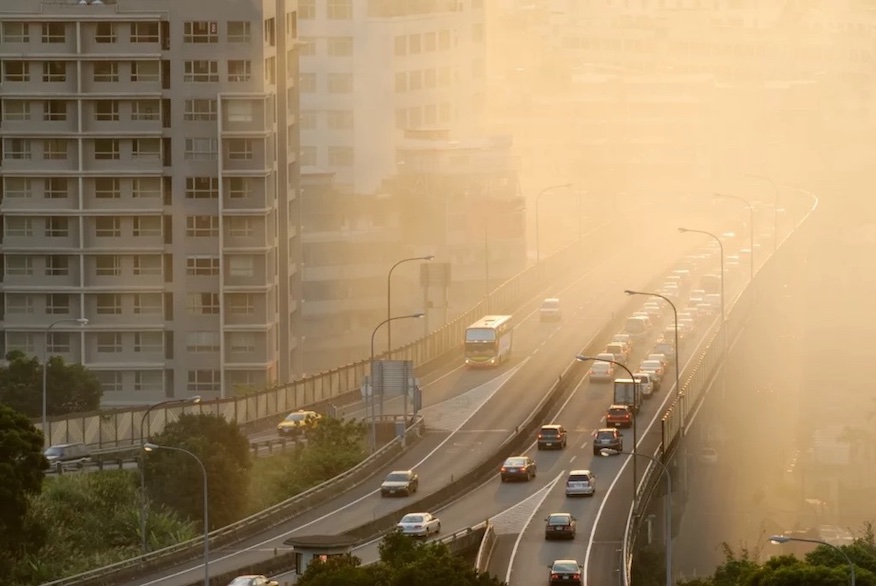Air pollution has become an alarming global crisis, with its detrimental effects extending far beyond the immediate environment. Fine particulate air pollution, specifically PM2.5, has emerged as a silent but deadly killer, affecting millions of lives across the world. In India, a nation grappling with severe air pollution levels, the consequences are particularly dire. According to the updated Air Quality Life Index (AQLI) released by the Energy Policy Institute at the University of Chicago (EPIC), the impact of PM2.5 on life expectancy is nothing short of catastrophic. The report indicates that the average Indian’s life expectancy is estimated to be shortened by a staggering 5.3 years due to PM2.5 pollution. In Delhi, a city notorious for its hazardous air quality, this figure escalates dramatically to 11.9 years – a grim reality that forces us to confront the severity of the situation.
Comparing WHO Standards and National Ambient Air Quality Standards
The AQLI report also sheds light on the disparity between international standards set by the World Health Organization (WHO) and India’s national ambient air quality standards. While the WHO recommends a PM2.5 limit of 5 micrograms per cubic meter (µg/m3), India’s standard is more lenient, allowing up to 40 µg/m3. This disparity has profound consequences for the Indian population’s health and life expectancy. If the WHO standards are not met, an average Indian could lose 1.8 years of life expectancy. Similarly, a resident of Delhi could face a reduction of up to 8.5 years. These figures serve as a stark reminder that the deviation from international standards can lead to substantial differences in the well-being and longevity of the population.
Air Pollution’s Geographical Impact on Indian Cities
The AQLI report further delves into the geographical distribution of air pollution’s impact within India. Unsurprisingly, the findings mirror the harsh reality that many regions face. India, ranking as the second most polluted country globally after Bangladesh, witnesses a distressing trend in various cities. The report highlights the dire consequences of air pollution in areas such as Gurgaon, Faridabad, Jaunpur, Lucknow, Kanpur, Muzaffarpur, Prayagraj, and Patna. In these regions, life expectancy is shortened by significant margins – a concerning trend that calls for urgent attention from policymakers, urban planners, and citizens alike.
Moreover, the report’s revelation that all of India’s 1.3 billion residents live in areas where annual average particulate pollution levels exceed WHO standards is a sobering reminder of the ubiquity of the crisis. Additionally, a staggering 67.4% of the population resides in areas that surpass the national air quality standards, underscoring the need for comprehensive and effective interventions.
Impact on Health and Global Comparisons
Measured in terms of life expectancy, the AQLI report identifies particulate pollution as the gravest threat to human health in India. The report asserts that cardiovascular diseases, exacerbated by air pollution, reduce the average life expectancy by approximately 4.5 years, followed by child and maternal malnutrition causing a reduction of 1.8 years. This not only underscores the health risks but also highlights the interconnectedness of environmental and public health concerns.
Globally, the implications of PM2.5 pollution are equally alarming. According to WHO standards, air pollution remains the most substantial external risk to human health, reducing average life expectancy by 2.3 years. However, it’s crucial to note that these figures can vary based on country-specific ambient air quality standards, considering geographical and meteorological factors. The report’s assertion that the impact of PM2.5 pollution on global life expectancy rivals that of factors like smoking, alcohol use, unsafe water, transport injuries, and even HIV/AIDS speaks volumes about the gravity of the situation.
Concentrated Impact and the Need for Urgent Action
The AQLI report pinpoints that the overwhelming majority of air pollution’s impact on global life expectancy is concentrated in just six countries: Bangladesh, India, Pakistan, China, Nigeria, and Indonesia. These nations collectively bear the burden of losing significant portions of their citizens’ lives due to polluted air. Such revelations demand immediate and concerted efforts on both national and international levels to combat air pollution comprehensively.
In South Asia, the report’s data indicates a disconcerting trend. Particulate pollution increased by 9.7% from 2013 to 2021, resulting in an additional half-year reduction in life expectancy for the region, as estimated by AQLI. India, Pakistan, and Bangladesh witnessed PM2.5 level increases of 9.5%, 8.8%, and 12.4%, respectively, during this period. These numbers highlight the urgency of implementing effective measures to mitigate air pollution’s growing threat.
In conclusion, the updated Air Quality Life Index report by the Energy Policy Institute at the University of Chicago underscores the dire consequences of PM2.5 pollution on Indian life expectancy. It paints a grim picture of a population grappling with shortened lives, especially in highly polluted areas like Delhi and several other cities. The data emphasizes the disparities between international and national air quality standards and their profound effects on longevity. With air pollution’s impact comparable to major health risks globally, the need for collective action cannot be overstated. Policymakers, communities, and individuals must collaborate to address this critical issue, aiming not only to extend lives but also to secure a healthier and more sustainable future.

